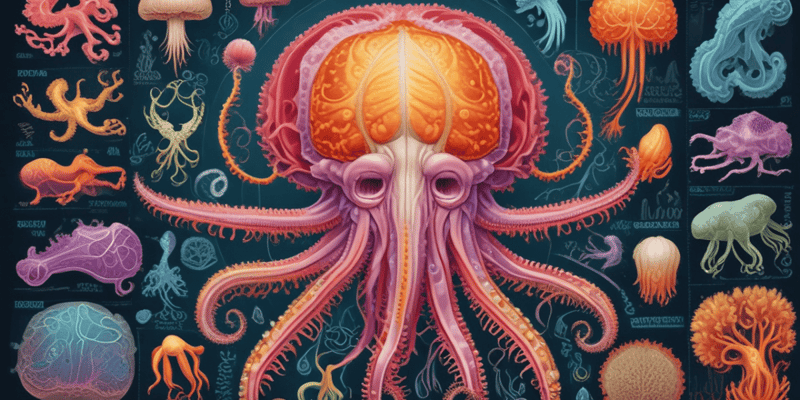Questions and Answers
What type of symmetry do animals in this group have?
Bilateral symmetry
Which characteristic defines bilateral symmetry in animals?
Approximately equal right and left sides
What distinguishes animals with bilateral symmetry?
Distinct anterior end
Animals with bilateral symmetry have a distinct anterior end and the right side is approximately the same as the left side
Signup and view all the answers
Bilateral symmetry is found in animals with radial body plans
Signup and view all the answers
Animals with bilateral symmetry do not have a distinct anterior end
Signup and view all the answers
Why is bilateral symmetry significant in animals?
Signup and view all the answers
How does bilateral symmetry impact an animal's body plan?
Signup and view all the answers
What is the defining characteristic of animals with bilateral symmetry?
Signup and view all the answers
What is bilateral symmetry in animals?
Signup and view all the answers
Why is bilateral symmetry significant in understanding animal body plans?
Signup and view all the answers
How does bilateral symmetry differentiate animals within this group?
Signup and view all the answers
What is bilateral symmetry in animals?
Signup and view all the answers
What group of animals is characterized by bilateral symmetry?
Signup and view all the answers
How is bilateral symmetry defined in animals?
Signup and view all the answers
Which phyla of animals are included in the group with bilateral symmetry?
Signup and view all the answers
What characterizes the body plan of animals with bilateral symmetry?
Signup and view all the answers
What distinguishes the adult Echinoderms from their larvae in terms of symmetry?
Signup and view all the answers
What are the triploblastic characteristics of animals in the grade Bilateria?
Signup and view all the answers
Match the following terms with their characteristics in animals with bilateral symmetry:
Signup and view all the answers
Match the following descriptions with their corresponding symmetry in animals:
Signup and view all the answers
Match the following statements with the appropriate type of animal symmetry:
Signup and view all the answers
Match the following terms with their characteristics in animals with bilateral symmetry:
Signup and view all the answers
Match the following statements with the appropriate type of animal symmetry:
Signup and view all the answers
Match the following descriptions with their corresponding symmetry in animals:
Signup and view all the answers




